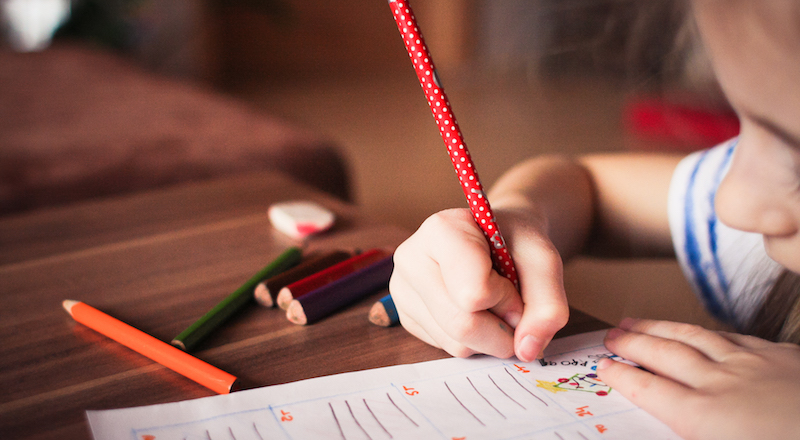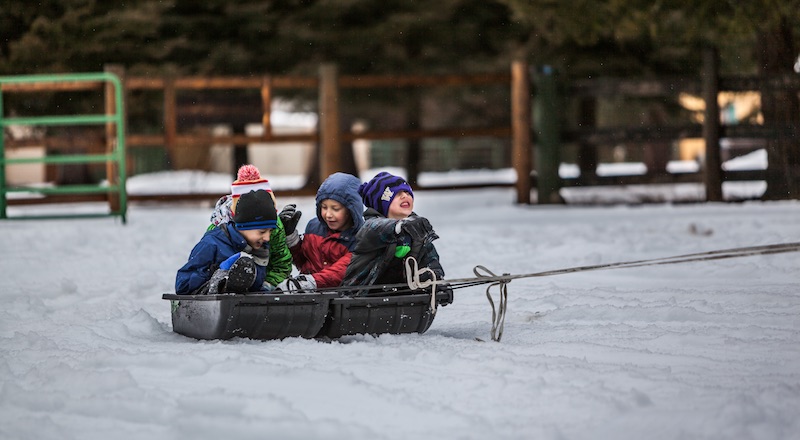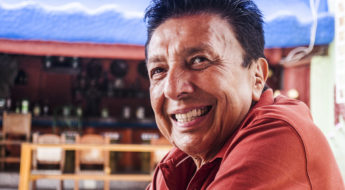10 TRUTHS ABOUT THE FINNISH EDUCATION SYSTEM

The Finnish education system is a surprisingly well-known topic in Latin America. It’s everywhere; it’s on the newspapers, it’s on tv, it’s on social media and it’s been on documentaries. Just by googling the Spanish words “Sistema educativo de Finlandia” you get 784 000 hits, and by changing the order of the words a bit, the amount doubles. In fact, after hearing that I’m from Finland and after asking me all the basic questions, many people want to know the following: “Sissi, what’s so great about your education system?” Here’s what.
The thing is, most of the information that the media spreads about the Finnish education system is completely absurd. There’s a lot of false information going around, and even when the information is partly right, there’s a lot of background information and explanations missing. For example, when Argentina’s main newspaper Clarín wrote an article on “Finnish children getting no homework”, as their sole reference they used Michael Moore’s documentary Where to Invade Next. What I wonder is, how can an important newspaper base an article on a documentary which was shot during one week in Finland, and which function is not only to provide information but to entertain? Moreover, what’s the point of giving out “information”, without telling the reasons why behind it, or bothering to explain, what’s done instead. So, let me try.
Information from teachers and parents
I’ve gone through the education system myself (whilst also having gone to school in the USA and Austria), I’ve done my master’s thesis on Finnish school books, and I’ve worked as a substitute teacher in elementary an junior high schools. Even so, I figured my best informants for such an article would be Finnish teachers and parents, who are currently, actively inside the education system. Some of these people have also gone to school in countries like Brazil, Italy and Ecuador, and some have children who have gone to school in countries like Honduras and Spain. I’ve also closely followed comments on this topic on the Argentinian and Paraguayan media. Therefore, in addition to explaining the key points of the Finnish education system, I also want to address some of the most frequent comments at the end of my text (please see: “Yeah! But that’s Finland!”).
An example country in education
This post is about the education system, not the Finnish society in general. I don’t think that Finland is an example of a perfect country. It’s a country with high rates of suicides, burnouts and depression. It’s a country where people are taught to follow the law so obediently that they sometimes seem to lack common sense. It’s a country where elderly people are left alone, because there’s no one to take care of them when they grow old. Finland is a fairly just country to its own citizens, yet definitely not an easy one for immigrants. People generally pay their taxes (although tax evasion exists) and get monetary subsidies when giving birth, when studying, when sick and when unemployed (and some people do also take advantage of these benefits), but, at the same time, this leaves Finns somewhat dependent on the state.
Education is the key
Ignoring many of the things that Finland could definitely improve in, the thing that makes Finland special compared to many other countries is, that all – and I mean all – Finnish citizens have access to basic education. And I am convinced that this is the secret for a functional society. Now, some might argue that Finnish kids are trained to “just be law obedient, capitalist citizens” (in which I partly agree), but I still believe that education is the key to fighting poverty and inequality (in fact, to date there are very few very poor or very rich people in Finland). I will not get into what Finnish school kids are like or what they do after finishing school, but what I will get into is how the Finnish education system differs from the rest of the world’s. So, let’s begin.
1. Finnish schools are equal
Finland is a country with no expensive elite schools. In fact, it’s a country where charging fees for compulsory education is illegal. Theoretically, all Finnish elementary and junior high schools are equal and provide the same level of education for all students. The fact that everyone regardless of their income is granted this education, is the reason why statistically, the Finnish school system is above others in international studies — the emphasis is on good results with large masses, whereas e.g. in the US there is a huge gap between very skilled students and students who know nearly nothing. Moreover, due to lack of elite schools, the whole nation wants the public education to be good. Although the Finnish education system has been criticized for “top individuals” not being able to develop, most Finns still prefer education for everyone regardless of income, over elite education.
2. The profession of a teacher is respected
In Finland, teachers are highly educated, esteemed, independent professionals of education. The education plans are much more loose than in other countries, so teachers themselves are quite free to decide how they teach. Moreover, the entrance exams for teacher education are difficult, and there is a lot of competition. This means that teachers, who nowadays apply for teaching and actually do become teachers, are usually intelligent, talented and motivated individuals. For example, language teachers in Finland know the languages they teach very well, and they speak these languages to students in class. This is not the case everywhere, as in some countries there are people who study to become teachers simply because they haven’t been accepted to study anything else. Last but not least, due to its prestige, the job of a teacher is quite well paid in Finland.
3. Kids start school when ready for it
In Finland, kids start school at the age of 7. In many countries, this is unheard of. For example, in Argentina and Paraguay, kids start school at the age of 4. However, it’s scientifically proven that at this age, children are in no way ready for sitting down in classrooms and holding pencils in their hands. In fact, not just are they mentally not ready for it, but also their motor skills are not ready for it. Just think, Is it any wonder if a kid’s motivation is lost when made to do something they’re not biologically ready for? Moreover, when children are in school, their results are controlled. There are certain standards that all students need to fulfill in order to proceed with their studies. For example, one does not make it to 3rd grade without being able to read and without understanding what it is that one is reading.
4. Emphasis on pedagogic research
Finland is a country which puts a lot of emphasis on child development and pedagogic research. The research results of developmental psychology and learning psychology are greatly applied in teaching, and a lot of importance is given to what learning actually means. As far as learning goals go, inner motivation of pupils is perhaps the most important individual factor. So, also teaching is considered efficient when concentrating on finding and nurturing this inner motivation. Very basically and idealistically; Finnish education is about kids not only memorizing different kinds of facts by heart, but about learning to think analytically. It’s about questioning information and evaluating references. (Of course, even in Finland, many students fight such harsh social problems at home, that finding “inner motivation” may not be his/her number one priority.).
5. Importance of inner motivation
In student-driven education, pupils are encouraged to think, to understand and to look for information themselves. They are even encouraged to find questions to which even their teachers might not have answers to. In this case, the answers are sought out together. The teacher goes around in the classroom, leads to conclusions and advices those who most need help (as opposed to teacher-driven education, where the teacher teaches and children listen). A teacher praises, motivates and encourages. Moreover, even evaluation does not happen in the form of one final exam, but the pupils themselves participate in it (by, for example, setting personal goals for themselves in the beginning of the school year, or even as often as every week. They are then evaluated together with the teacher at the end of the pre-determined term.). From a very early age, they learn to take responsibility for their learning – and hopefully learn out of inner motivation, not for parents or exams (=outer motivation). Therefore, also cheating in exams is not as common as in some other countries.
6. No strict standards in teaching methods
There are less exams than in other countries, because the point of school is not to pass exams but to learn. There are also no standardized, nationwide tests, except for the matriculation exam when finishing the vocational senior high. This also means that there’s not as much competition as in other countries. What’s important to note about the Finnish system is that teachers also have a lot of freedom in teaching. There is, of course, a nationwide school curriculum, yet the teacher is free to implement its content with the methods he/she chooses. This not only makes the children, but also the teachers more motivated as they can use their own creativity and strategies in teaching. Here, it’s important to note what I said before: Finnish teachers are highly educated, esteemed, independent professionals of education.
7. In-school special education
In every school class in the world, there are pupils who learn things faster than others. And then there are those who don’t. In some systems, kids who don’t learn things as fast as their peers, are forced to repeat a class. In others, parents who are well off, pay for private teachers and classes. In Finland, however, a lot of emphasis is put on special education. When a kid does not learn things as fast as his peers, a special education teacher is assigned to help him/her. This not only helps the student in question, but also guarantees peace in classroom for others. So, there’s no need for costly private classes outside school, because the job of the school is to provide education for the child. Therefore, ideally, no one is left alone. However, as resources are cut down and classroom sizes grow, Finland might be facing challenges in special education in the future.
8. Learning by doing
When speaking about Finnish kids “learning by playing”, the question is about utilizing the natural habit patterns of a child in learning by doing. Yet, the playing in schools is not just any kind of playing – there is always a pedagogic purpose within. When learning by doing, one internalizes things better than when learning by memorizing. It also creates a joy for learning, which again raises the kid’s inner motivation to learn. In the so-called exploratory learning method, a child is attracted into getting interested in a phenomenon, and studying it by himself/herself. Here, the role of a teacher transforms more into that of a mentor or a motivator – a tutor and guide in the learning process. The student does not just passively receive information but is transformed into an active learner. So, once more: Finnish education is about learning to think instead of learning by heart. It’s about inner motivation instead of outer motivation.
9. Little homework and short school days
In Finnish schools, there is statistically a lot less homework than in other countries. According to the Finnish education ideology, kids are supposed to be taught in school, not at home (which, ideally, is what schools are supposed to be about all over the world). Moreover, if the point of homework is doing on one’s own and that’s already done in school, why should it also be continued on free time? Although this is the ideal, in many other countries kids get more homework than they can handle. What’s more, it’s usually so difficult that either their parents have to do it for them, or they have to pay for a private teacher to assist their kids with their homework. As for the length of school days, Finnish kids statistically spend a lot less time in school than kids in other countries. This leaves time for children to be children, and to enjoy their free time. For learning purposes, it’s important to let the brain rest and allow time for other things.
10. School meals for all!
It maybe doesn’t seem important at all and it’s a highly criticized topic in Finland, but Finland is a country with great school meals. Firstly, just the fact that there are school meals is very different from the reality of many other countries. Finnish children eat at school, and the food they eat is diverse, nutritive and healthy (at least according to some standards). Moreover, school meals are free (paid through taxation), so no one is left without a meal. This is important, because it provides kids with the needed energy to get them through the school day, whilst also assuring that everyone is fed equally and well — at least once a day.
“Yeah! But that’s Finland!” — arguments on why it won’t work.
When speaking about the Finnish education system, there are millions of arguments why people say it will never work in their countries. It’s a topic of interest for many in theory, yet when it comes to actual implementation, that’s where the interest of people seems to fade. Here are the most common arguments I’ve heard, and my comments on them.

“Finland is a rich country”
A country is not rich per se. People often mistakingly think that Finland has a good education system, because “Finland is a rich country”. However, in the years following the wars (60 years ago), Finland was still a developing country. Therefore, the Finnish education system really is a success story that even many Finns don’t realize. In fact, in the middle of the 1940s Finland was still paying its debts to Russia, and the whole country was in crisis. In 1950s, when the education reform was first suggested, the right wing party was against it, whilst considering it communistic. Only in the 1960s, together with urbanization and industrialization and the decision to invest on education, the country slowly started to rise from ashes. A country is not rich just because it was born rich. In fact, considering the natural resources of a dark country covered with snow all the time, there are definitely naturally richer countries in this world.
“In Finland, people pay their taxes”
The second argument why people think that the Finnish system won’t work in their countries is that “in Finland people pay their taxes, and here they don’t”. This, I cannot disagree with. Even though Finland has free education, our parents have generously paid for it in form of taxes their whole lives. In fact, we Finns learn in school and from our parents, that taxes are to be paid. Although Finland also has its tax evaders, most people happily pay their taxes. This, of course, is not true to all countries. Yet, whatever is cultural, is educational and can be changed; honesty comes from education. However, change is slow and even in Finland it has taken generations and a lot of effort. The present situation is due to political decisions and renovations which value equality between individuals. And the situation constantly develops.
“Our politician’s won’t invest on education”
The third argument is: “our politicians don’t want to invest on our education, because ignorance of the masses is good for them”. This one is the tricky one. In the end, quality education benefits all. Now, I’m aware that not all school facilities in the world are the same at the moment, but that’s not the point. The point is, change needs to start somewhere. Yet, how to begin changing a system when the people in power don’t want to change it? How to change a corrupt system? I really don’t have an immediate answer for this, but I believe the answer being “people”. Marches, social media, whatever. We have seen the power or people in the past and I’m sure we will also see it in the future. When people believe in change, they can make it happen. However, sadly, many don’t (as you might notice looking at your own thoughts right now). But people are the answer, so spread the message, if you think it’s important!
Myths about the Finnish education system
Last but not least, let me address some social media myths on “why Finland has the best education in the world”.

“School is totally free.”
Elementary school yes. In senior high school you have to pay for your school books.
“There is no school uniform and you can dress as you like.”
You aren’t allowed to wear, for example, a cap in class room. Yet, I don’t believe this has much to do with a school system being better or worse from any other.
“There are no entrance exams, you only need the will to learn.”
This is true to elementary school and junior high school, yet to many senior high schools you need good grades to enter. If a senior high school is specialized in sports or arts, you also need to do entrance exams to get in.
“If you study in senior high school or at the university, the state helps you with 125 dollars a month.”
If you live alone, yes (actually, the money is more). Yet, if you live with your parents the state will not provide you.
“Finnish kids are allowed to speak in class and say whatever comes into their minds.”
They are allowed to speak in class when the teacher lets them. However, they’re not allowed to say whatever comes to their minds.
“It’s prohibited to put students into different classes according to their capabilities and intellectual capacities.”
In all classes there is a special education teacher to ensure that all kids keep up with the rest of the class. However, there are also schools for children with special needs.
“No one goes to school before turning 7.”
Yes, except if your birthday is from August to December. In that case you go to school at the age of 6.
“The pupils evaluate their teachers and if they are bad, they are fired.”
Not true. However, if the teacher does something illegal, the pupils are heard.
“Finnish kids never get more than half an hour of homework.”
It depends on how fast the kid is in doing his/her homework.
“In case of being good in sports, they give you a personal trainer.”
No, even Finland doesn’t have the money for this.
“The pupils choose the menu of the week and can eat dessert twice.”
No. How could all pupils choose the menu? Maybe a couple get to vote for it out of various options in some schools, but in most schools, children eat what they get. As far as dessert goes, could be.
“Education is done in a relaxed atmosphere where every kid gets to sit where he/she wants.”
Depends on the school, but this does not apply to most schools (and as substitute teacher I’ve been to quite many schools in the capital area).
“Exams can be done in groups.”
On rare occasions, maybe. But usually not.
“If a student bullies or sells drugs, he’s expelled and there’s no turning back.”
What would that solve? Maybe the kid is not allowed into the same school, but there are always conversations. First with the kid, then with his/her parents. Then, in the worst case he might be expelled but he will surely be put into another school.
“Each classroom has 3 teachers every 2 students.”
No. I wonder with what money would their salaries be paid?
“School starts after 10am (although the human brain is not totally funcional for learning after this hour).”
No. The time of school begin varies, but usually it is between 8am and 11am.
“It’s prohibited to take homework home. The idea is to enjoy time with the family and to not have stress.”
If it were forbidden, why would teachers even give homework? There’s not a lot of homework, but there usually is some.
Thank you for collaborating: Emmi, Eriikka, Ismo, Leena, Linda, Meri, Ninni, Nora, Sini and the Finnish National Agency of Education.
Featured picture: Victor Hannacek/Picjumbo
Picture of kids: Jesse Orrico/StocSnap
For a Spanish version of the article, click here.


















And yet Finnish education is the best in the world. I understand there are certain things that need improvement, but from my experience, it is absolutely amazing!
Hi Alina! Indeed 😀